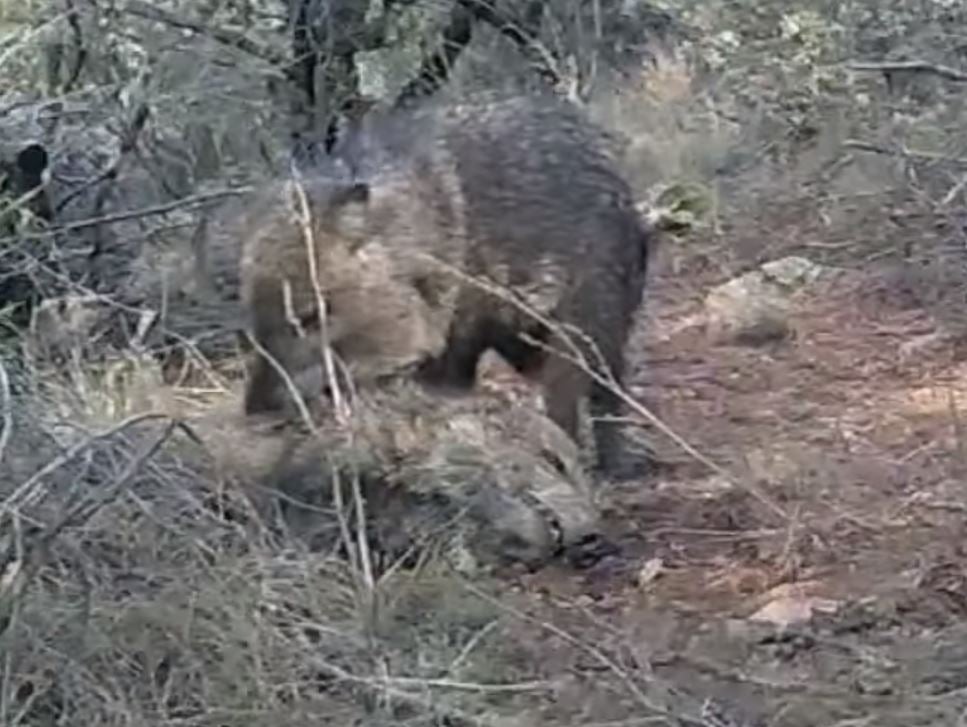Sad skunk pigs filmed apparently mourning dead friends in 'amazing' discovery – by eight-year-old boy
Dante de Kort credited with find after recording peccaries visiting corpse for days

A species of animal closely related to pigs has been observed for the first time appearing to mourn its dead – by an eight-year-old boy.
Peccaries, also known as javelinas or skunk pigs, are pig-like hoofed animals native to the Americas and add to a growing list of species that have exhibited behaviours indicating grief.
Dante de Kort has been credited with the discovery after recording the animals visiting a dead member of its herd for days afterwards.
In January, Dante was watching the group of five collared peccaries behind his house in Arizona. The next day he found one of adult females dead, with the rest nearby, reports the New Scientist.
On the third day, the boy set up a camera that was triggered every time an animal approached the body, which had by then been moved to the top of a hill due to the smell.
Dante captured recordings over the next two weeks and put his findings on a poster, then submitted it to a regional science fair.
There it captured the attention of Mariana Altrichter, co-chair of the Peccary Specialist Group at the International Union for Conservation of Nature.
Ms Altrichter set up a meeting with Dante and his mother and told them his observations could be of scientific merit. The recordings eventually formed the basis for a paper published in the International Journal of Behavioural Biology, with Dante as the lead author.
In the days after the peccary’s death, members of the herd visited the corpse for 10 days before it was dragged away by coyotes.
The peccaries continually went in pairs or alone to visit the body, most often at night. They were seen pushing it, staring at it, biting it and trying to pick it up by putting their snout under the corpse and pushing it up.
They even defended it from groups of coyotes they were outnumbered by.
Ms Altrichter told National Geographic: “It was pretty amazing because it wasn’t just an immediate reaction and then they moved on—it went on for 10 days.”
The paper said this behavioural complexity for peccaries were “beyond those known so far” to science. “The behaviours of this herd of peccaries resemble those of humans, cetaceans, chimpanzees, and elephants and show that these groups are not the only ones that react to death,” it added.
Barbara King, emerita professor in anthropology at the College of William & Mary in Virginia, and author of How Animals Grieve, told The Independent the animals did appear to be grieving.
“Some of the filmed behaviours by the peccaries may be related to curiosity about the body or protection of it, but two in particular make me think that grieving may be present: sleeping right next to the dead one, and the persistence of the responses to death over so many days,” she said.
“Certainly we know that many social animals ranging from monkeys and geese to pigs and dogs do grieve, not just chimpanzees, cetaceans and elephants, so there’s every likelihood these animals may be expressing sadness.
“How terrific to have this new glimpse into their behaviour, all thanks to a smart and curious young boy!”
Dante told National Geographic: “Most people think they’re just animals, but they actually are pretty smart, and they have some human instincts too.”
Join our commenting forum
Join thought-provoking conversations, follow other Independent readers and see their replies
0Comments